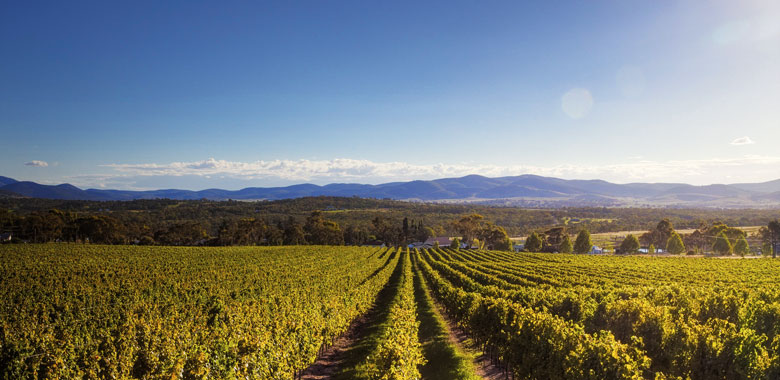
Wine
A Guide to Wineries in the Granite Belt
Cool climate wines from Queensland – if that sounds strange, head to the Granite Belt wine region and you’ll find plenty!
It’s well established that the first ‘official’ Australian wine region was Farm Cove NSW, planted by Captain Arthur Phillip in 1788. But what about the second? If you assumed it was in South Australia, Victoria or even Tasmania, you would be wrong.
It is, in fact, Queensland’s Granite Belt, planted in 1820, preceding Victorian and South Australian regions by 15-plus years.
Given most of Queensland is hot and tropical, we usually associate it with beaches and reefs rather than grape vines. However, the Sunshine State has a rich and varied agricultural history and people are now starting to favour the Granite Belt’s cool climate, Euro-style wines.
Three hours south west of Brisbane on the southern Darling Downs, the Granite Belt is situated around Queensland’s apple capital, Stanthorpe. This is heralded on your arrival by a massive apple on a pole, a bold indicator of local pride in the tradition of Coffs Harbour’s big banana, Ballina’s prawn and Goulburn’s Merino.
Originally known as ‘Quart Pot Creek’, Stanthorpe was settled when tin was discovered in the late 1800s. Fruit production followed as the altitude and climate started to attract Italian immigrants who’d come to Australia to cut cane and then moved south to take up pastoral leases.
Cool Climb Wines
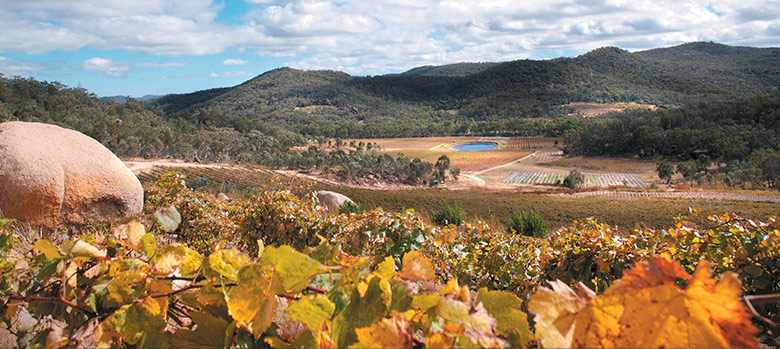
As you travel south west from Ipswich along the Cunningham Highway, you start the gradual climb through the Great Dividing Range. By the town of Aratula, a popular resting spot, the temperature drops considerably and you realise how cool it gets at 110 metres above sea level.
The Granite Belt has some of Australia’s highest altitude vineyards and it is the associated cool climate that is the perfect setting for the region’s fine boned wines.
So don’t visit this region expecting big, ripe wine styles that are popular in warmer areas. The cool climate dictates that the Granite Belt’s wine styles are closer to those of Europe. Think medium bodied, savoury reds with fine tannins and pronounced acidity. In the whites, expect lighter, citrus driven styles with elegant layers and fine acid lines.
Adding to the Granite Belt’s wine identity is the fact it excels in alternative styles. While you’ll certainly find mainstream varieties like Shiraz, Cabernet and Chardonnay, real excitement comes from discoveries like Fiano, Vermentino, Chenin Blanc, Savagnin, Barbera, Graciano, Durif, Nebbiolo and Tannat.
Granite Belt producers have long recognised that these varieties are the future and with their unique alternative identity, have dubbed themselves the ‘Strange Birds’ of the Australian wine scene. In fact, visitors can explore this fascinating region by following one of the Strange Bird Wine Trails.
BOIREANN WINERY
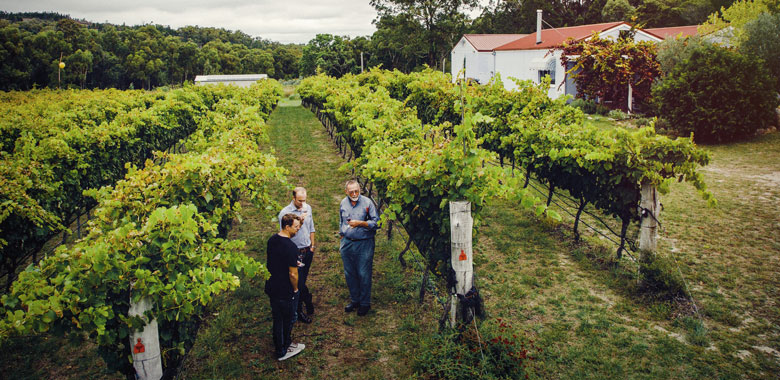
Established in the early 1980s by Peter and Therese Stark, Boireann has been a Granite Belt standout for decades. While quality and consistency are high, production is low, with reds the specialty and only a very small amount of Viognier grown to co-ferment with Shiraz. Standouts are their Shiraz Viognier, Barbera, Nebbiolo and the ‘Rosso’, a Nebbiolo Barbera blend.
www.boireannwinery.com.au/
GOLDEN GROVE
Third generation winemaker Ray Costanzo has made wine all over the world, but is passionate about the Granite Belt. Golden Grove is one of the oldest wineries in the region, making a wide range of wines including Sparkling Vermentino, Barbera, Nero d’Avola and Tempranillo, but it is Ray’s Vermentino that has developed a solid following.
www.goldengroveestate.com.au
JESTER HILL
Established in 1993, Jester Hill is now a family affair, having been bought by ex-health professionals Michael and Ann Burke in 2010. With the new focus that Michael is bringing to the wines, the estate is building momentum and picking up accolades along the way. Standouts include their Roussanne, Chardonnay, Shiraz and Petit Verdot.
www.jesterhillwines.com.au/
BALLANDEAN
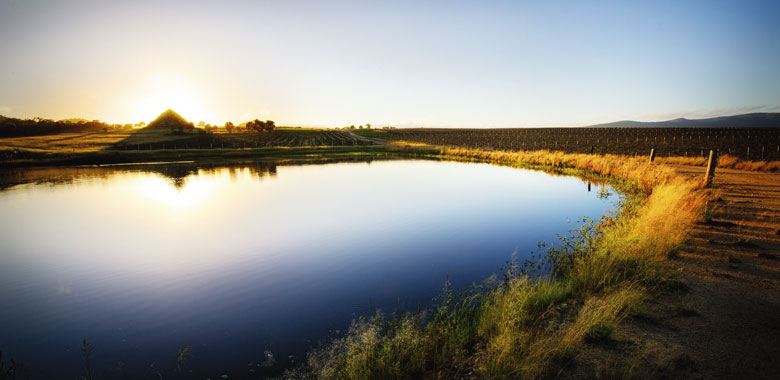
With an extraordinary history of winemaking that stretches back to the 1930s, the Puglisi family have been operating their cellar door and passionately flying the Granite Belt flag since 1970. Fourth generation Puglisis Leeane and Robyn are warm, generous, regional advocates, who have a large cellar door from which they love sharing their passion for both the wines and the people of the Granite Belt. Tasting highlights include their Viognier, Opera Block Shiraz and Saperavi, a full-bodied red that originally hails from Georgia.
www.ballandeanestate.com/
JUST RED
Another family-owned winery, Just Red is run by Tony and Julie Hassall with their son Michael and daughter Nikki. Just Red’s organic wines are styled on the great wines of the Rhône and are winning awards in the show system. Their star wines include Tannat, Shiraz Viognier, Cabernet Merlot.
www.justred.com.au/
RIDGEMILL ESTATE WINERY
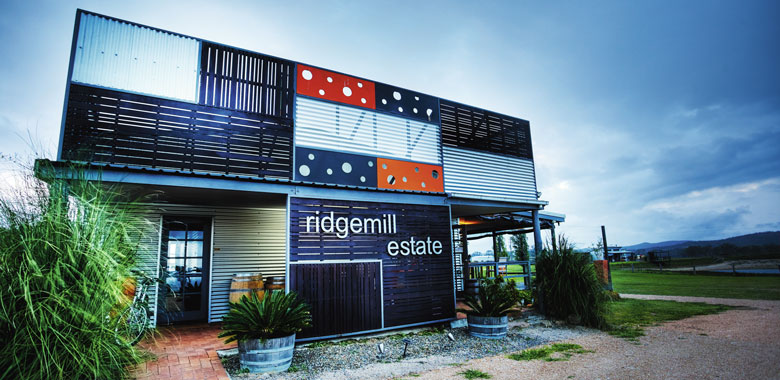
Starting its life as Emerald Hill in 1998, Ridgemill boasts a modern but unpretentious cellar door looking out on dramatic mountain surroundings. The broad range of wines is crafted by winemaker Peter McGlashan and includes Chardonnay, Shiraz, Shiraz Viognier, Mourvèdre and Saparavi. With its self-contained studio cabins, Ridgemill is a great place to base yourself.
www.ridgemillestate.com/
SYMPHONY HILL
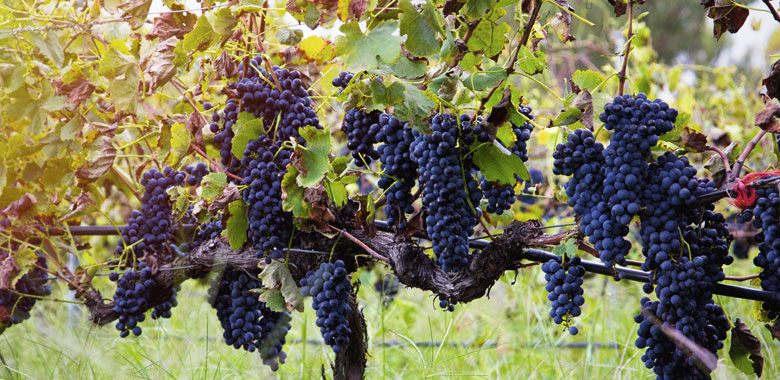
Symphony Hill’s winemaker Mike Hayes is quite possibly the Australian king of alternative wine varieties. Mike won the Churchill Fellowship and travelled around the world studying alternative styles. His wines are highly awarded, vibrant and interesting. A trip to the Granite Belt is not complete without a tasting with Mike, including his standout expressions of Fiano, Lagrien, Gewürztraminer, Petit Verdot and Reserve Shiraz.
www.symphonyhill.com.au/
TOBIN WINE
Adrian Tobin’s wines are a strong philosophical statement, reinforcing the notion that wine is made in the vineyard. Since establishing Tobin Wine in 1999, Adrian has been deeply connected to his vines and produces a small amount of high quality Sauv Blanc, Semillon, Chardonnay, Merlot, Shiraz and Cabernet. All of Adrian’s wines are named after his grandchildren and are collectables.
www.tobinwines.com.au/
GIRRAWEEN ESTATE
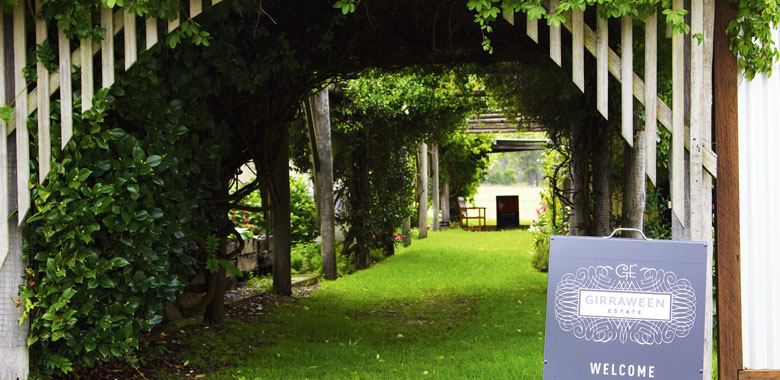
Steve Messiter and his wife Lisa started Girraween Estate in 2009. Small and picturesque, it is home to one of the region’s earliest vine plantings. They produce modest amounts of Sparkling wines, including Pinot Chardonnay along with Shiraz, Rosé and Sauv Blanc. Their table wines include Sauv Blanc, Chardonnay, Shiraz and Cabernet.
www.girraweenestate.com.au
FEELING HUNGRY
There is no shortage of good food in the Granite Belt, but a trip to Sutton’s Farm is essential. An apple orchard, it’s owned by David and Roslyn Sutton, who specialise in all things apple, including juice, cider and brandy. Their shed café also pays homage to the humble apple with the signature dish being home made apple pie served with Sutton’s spiced apple cider ice cream and whipped cream.
For breakfast, try Zest Café located in town, where the coffee is fantastic and their baking game is strong. Their breakfast will definitely see you going back for seconds.
A delicious choice for lunch or dinner is the Barrelroom and Larder, lovingly run by Travis Crane and Arabella Chambers. Attached to Ballandean winery, the Barrelroom is casual in style and fine in output. Everything that Travis and Arabella cook comes from within a three hour radius and if it doesn’t exist in that area, they don’t cook it.
A fantastic way to spend an afternoon is with Ben and Louise Lanyon at their McGregor Terrace Food Project. Based in a Stanthorpe, this neighborhood bistro with a gorgeous whimsical garden offers cooking from the heart with the surrounds to match.
Whether your choice is a Granite Belt alternative ‘Strange Bird’ or a more traditional varietal, take it along to Ben and Lou’s Food Project, sit out the back and you’ll feel like you’re in the south of France. You will, in fact, be in Queensland, thinking that it is a pretty cool place to be; literally and figuratively.